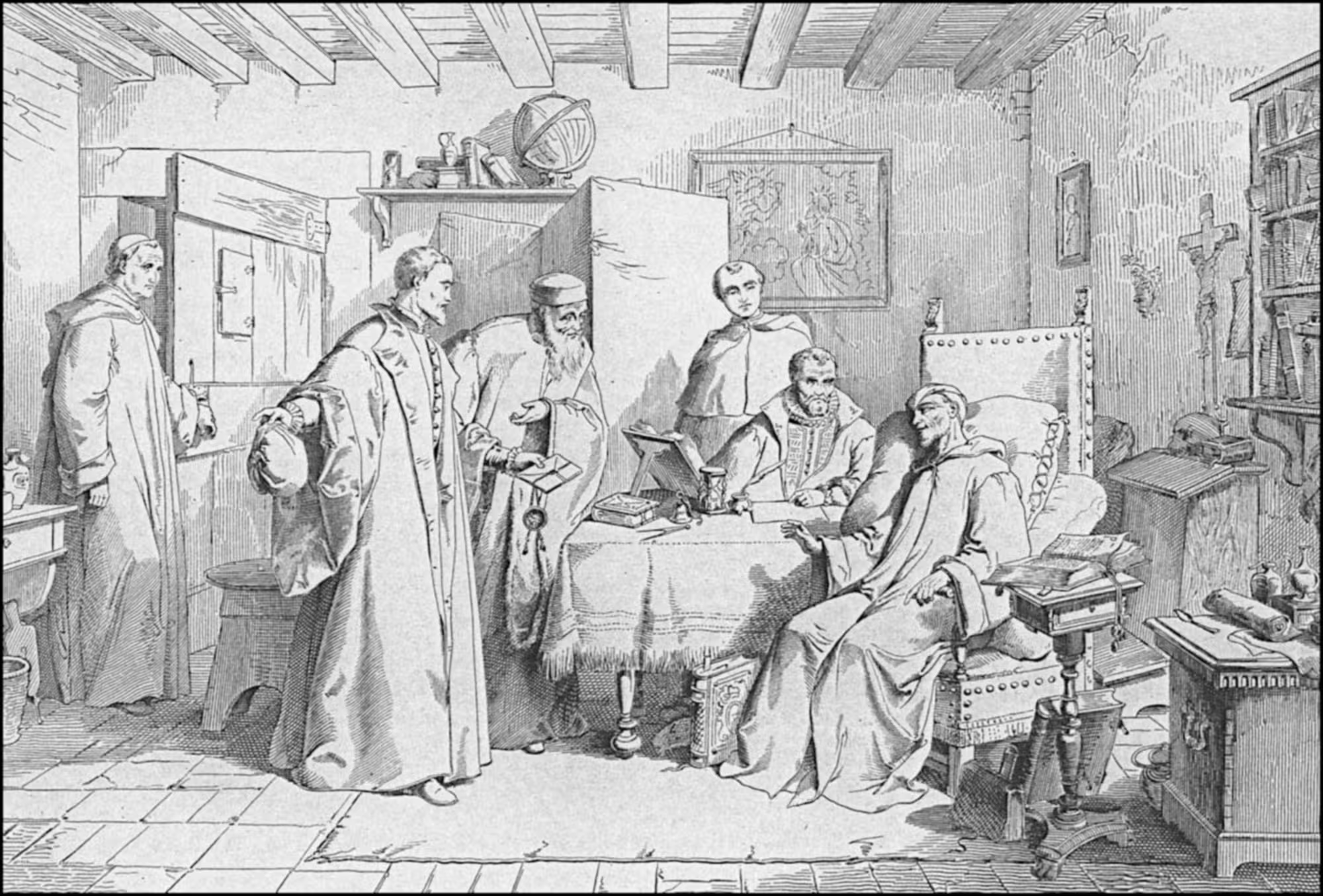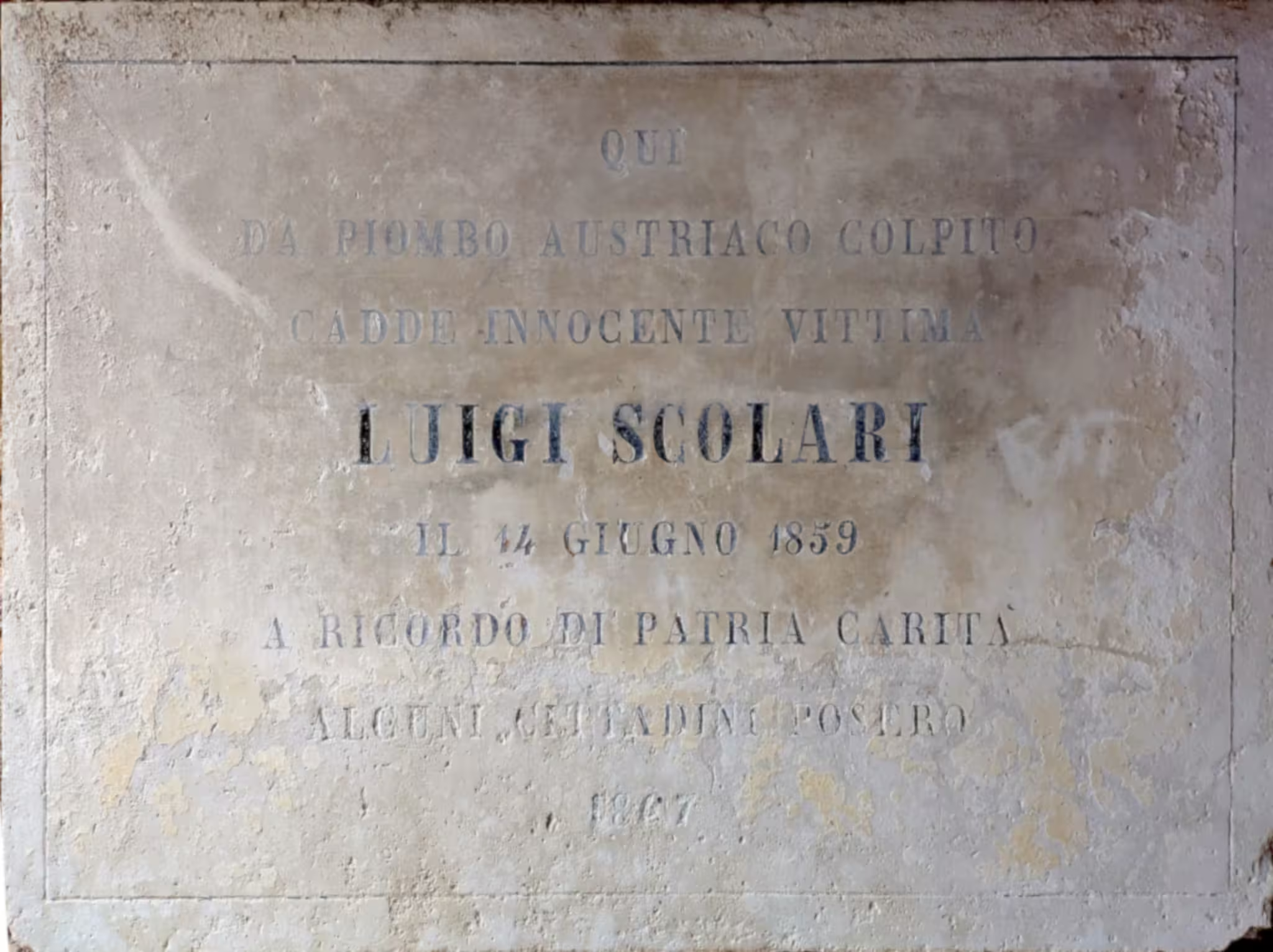A hooded figure crossed the Campo San Fosca. It was almost midnight. The square was empty, and so dark it was hard to discern the moving person.
He arrived at the bridge over the canal, and put his foot on the first step. The water below was black and silent.
The monastery was close, he was almost home. Fra Fulgenzio would be there to open the gate. He always was.
The monk stopped for a moment at the top of the bridge. Everything was dark and tranquil. He started descending the steps.
He would say his evening prayers with Fra Fulgenzio tonight too. They had done so for some time. It was one of the few certainties in life.
A shade moved to his right. And one to the left. Someone pushed him from behind. He fell to the ground.
Two dark figures bent over him, stabbing repeated at the person on the ground at the foot of the bridge. Others were standing around. One made a low cry, and all five ran away.
Fra Paolo
Paolo Sarpi didn’t die on that late evening on October 5th, 1607.
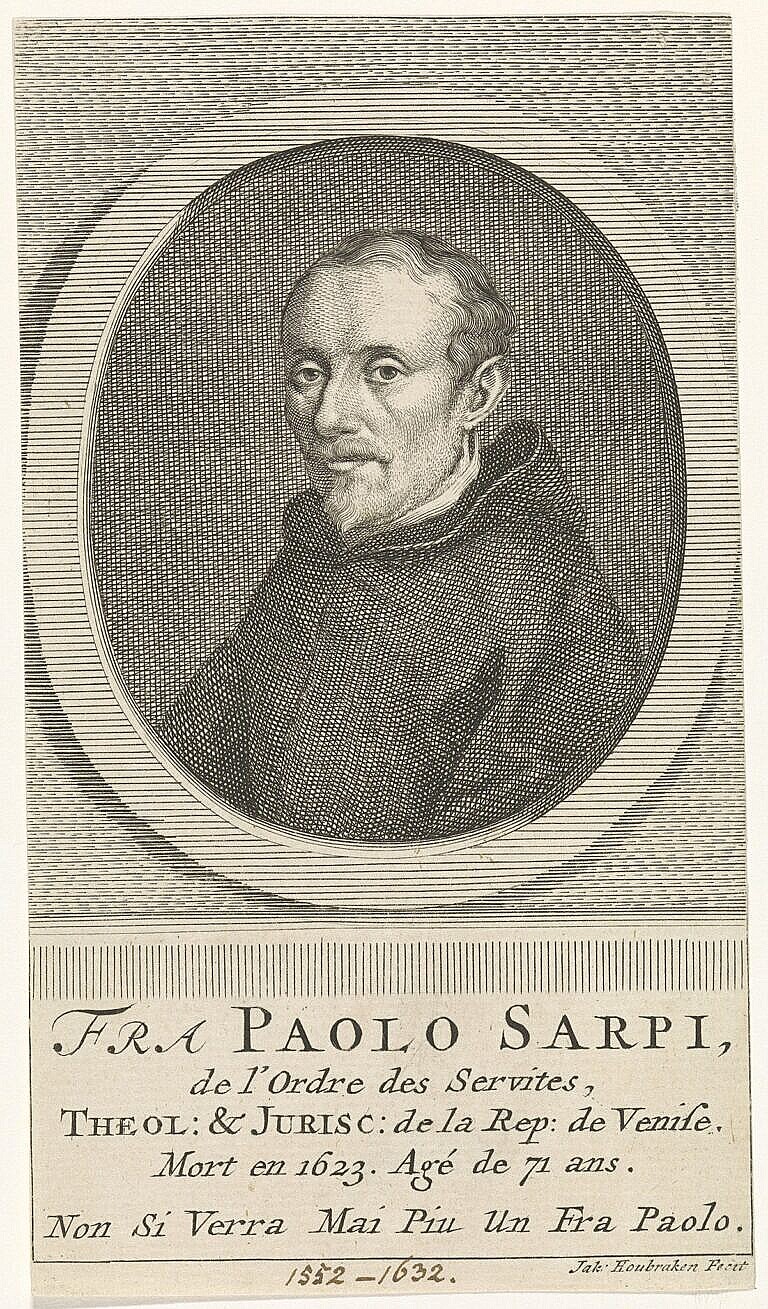
Somebody heard the noise, came out, got a doctor to him and he survived.
He had received three stiletto stab wounds to the face. One stiletto blade had entered near the right ear, and lodged in the right cheek bone. It blade was bent and required an operation to remove.
When the doctor asked him who he believed it to be, he answered: Agnosco stylum Romanae Curiae. The Latin phrase has a double meaning. It can mean “I recognise the style of the Roman Curia” or the “stiletto of the Roman Curia.”
Fra Paolo Sarpi, a monk and one of the great minds of his time, knew the Roman church was out to get him. They had been for a while, and it wasn’t the first time they tried, but it was the first time the killers got so close.
The almost assassins
The attackers fled the scene and hid the palace of the Papal nuncio in Venice. Later they travelled to Ravenna and Ancora, in the Papal state, and then onwards to Rome.
The leader of the group was a Rodolfo Pomo, a Venetian merchant who had moved first to Rome and later to Naples. In Rome he had become intimate with Cardinal Caffarelli-Borghese and through him with Pope Paul V himself.
Pomo had three material helpers, and the fifth attacker was a priest from the Santa Ternita church in Castello. He had functioned as a spy, and had tried to befriend Sarpi’s assistant Fulgenzio for some time, in search of information on the movements of Paolo Sarpi.
The assailants were initially greeted as heroes in Rome, The Pope, however, lost interest in them when news arrived from Venice that Sarpi wasn’t dead.
They later found refuge in the Kingdom of Naples.
Needless to say, Pope Paul V and the Roman Curia denied all allegations.
Why would the Pope murder a monk?
The assassination attempt was a tiny part of a much larger game.

The protestant reformations in Northern Europe led to the catholic counter-reformation, whose principles were decided at the Council of Trent, between 1545 and 1563.
The Venetian state, while remaining Catholic, ignored many of these demands from the church. Venice had, for example, a flourishing printing industry, which profited from lax censorship rules, so Venice mostly ignore the “Index.”
In most cases the reaction of the Catholic church was to double down on every issue contested by the protestants. This meant, among other things, mass strictly said in Latin, affirmation of the supremacy of the Pope over secular powers, more powers to the Inquisition to suppress dissent, and censorship through the “Index of forbidden books.”
Paolo Sarpi spent most of his formative years in the shadow of this conflict. He studied in Padua, Mantova, Milan, and spent time in Rome, before returning to Venice as a highly esteem theologian. He became a councillor to the Venetian state on religious matters. Sarpi settled in the monastery of the Servi di Maria, in the sestiere Cannaregio, close to Santa Fosca.
He established many friendships, with whom he remained in contact through an extensive correspondence. The contacts spanned the width of Christian beliefs, both within the Catholic church and in the reformation movements. He therefore saw several contacts executed as heretics by the Roman church.
Rome against Venice
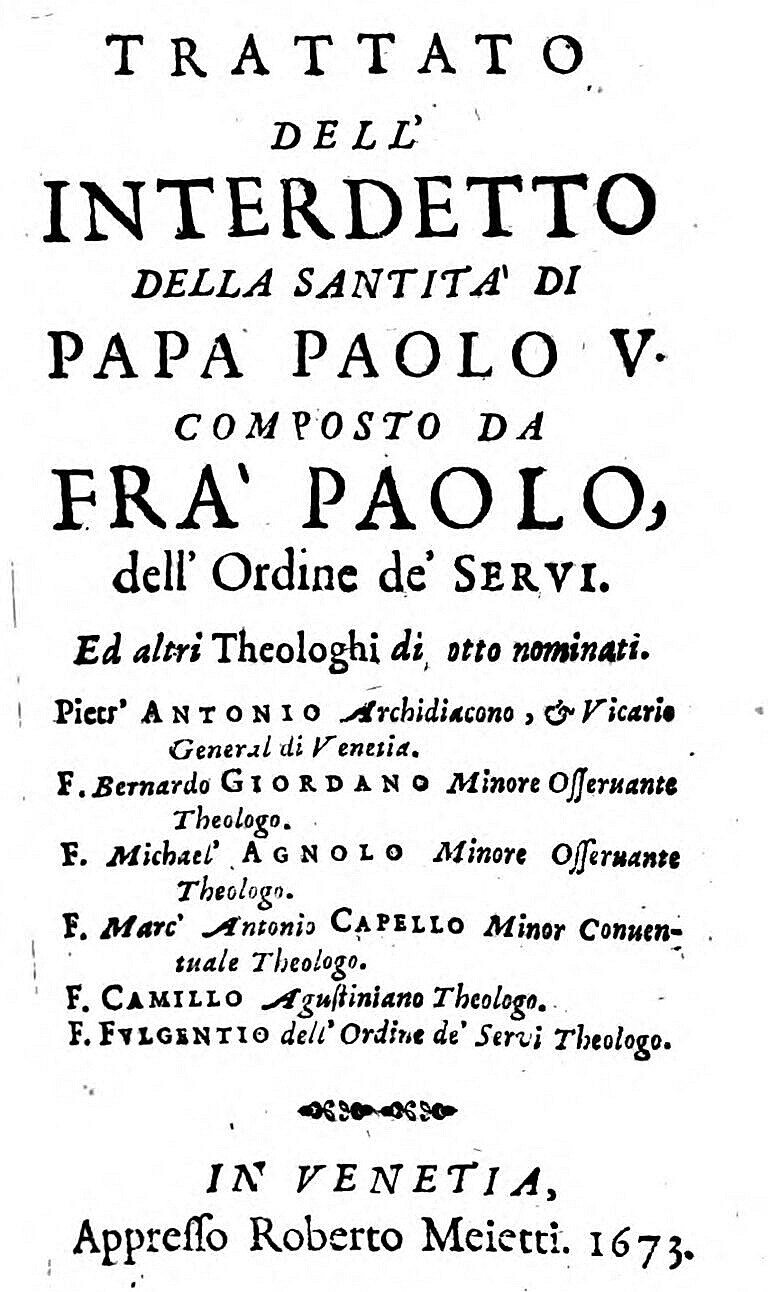
In 1604 the Venetian Republic passed a law disallowing religious organisations from establishing hospitals without the permission of the state. In 1605 the republic limited bequeathment of property from private citizens to religions organisations.
Then Venice arrested, sentenced and incarcerated two high ranking ecclesiastics on charges including murder, sexual abuse and rape. This went against the demand of the Roman church that representatives of the church should be tried by the church.
In December 1605 Pope Paul V demanded the abrogation of the two laws, and that the two arrestees were handed over to the Papal nuncio in Venice.
As one of the highest regarded theologians of his time, Paolo Sarpi had a leading role in drafting the Venetian rebuttals to the Pope’s demands. The replies were printed and distributed, while the demands of the Pope weren’t.
The response of the Pope was to excommunicate the entire Consiglio Maggiore of Venice, and place an interdiction on the state. All priests and religious orders were told to leave Venice, but only the Jesuits obeyed.
The Roman church hoped that the excommunication and interdiction would rally other Catholic states against Venice, but nobody came.
After a while the Roman church lifted the excommunication and interdiction in return for the two incarcerated churchmen, but the offending Venetian laws remained on the books.
There’s no other cheek
The Roman church, however, didn’t turn the other cheek.
Rome couldn’t and wouldn’t forgive that Sarpi, a man of the cloth, had argued ferociously and publicly against the church in favour of the Republic of Venice.
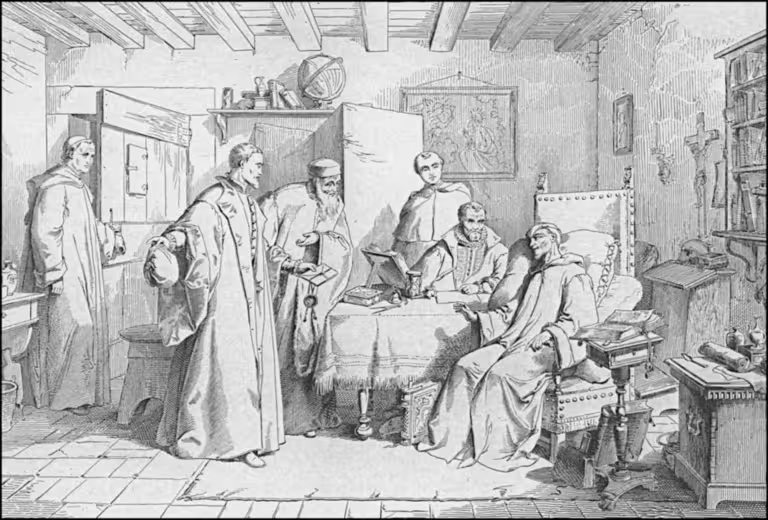
They tried through some of his contacts to convince him to come to Rome to defend himself in front of the Inquisition, but Sarpi saw the trap and declined the ‘invitation.’
After the assassination attempt the Venetian government offered Sarpi a house close to San Marco, for when he was there on government matters. That would alleviate the need for long walks through dark alleyways. Sarpi declined the offer of the house, but accepted money to buy and keep a boat. Henceforth he would move around the city by boat.
Paolo Sarpi died in 1623 of natural causes in his monastery.
Tassini, in his Curiosità Veneziane, writes: “His ashes were discovered by chance in 1722, in 1813 they were temporarily placed in the library of S. Marco, and finally in 1828 placed in the church of S. Michele a Murano.”
The monastery where Sarpi lived much of his life, was mostly demolished in 1813. Today there’s almost nothing left of church and monastery.
Fra Fulgenzio‘s account
Sarpi’s assistant, Fra’ Fulgenzio Micanzio, wrote a biography of Sarpi after his death. This is his account of the assassination attempt:
On October 5, 1607, around 11 pm, while the father was returning to his convent from San Marco to Santa Fosca, while descending the bridge towards the fondamenta, he was attacked by five assassins, some of them lookouts, some of them executors, and the innocent father remained wounded by three stabs, two in the neck and one in the face which entered the right ear, and exited precisely at that little valley which is between the nose and the right cheek, the murderer not having been able to extract the stiletto, which, having penetrated the bone, remained planted and very crooked… The assassin had the first opportunity to strike, and gave more than fifteen blows by stiletto, as was seen by some women who were at the windows, and the holes in the hat, in the hood, and in the collar of the jacket, but only three wounded him… The father was satisfied that the stiletto was hung at the foot of a crucifix in the church of the Servi… with the inscription: Dei Filio Liberatori.
Fulgenzio Micanzio (1750), pp. 55-56

